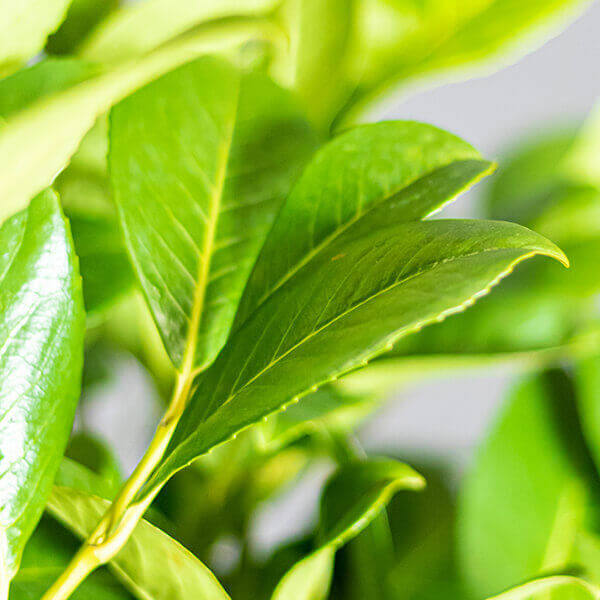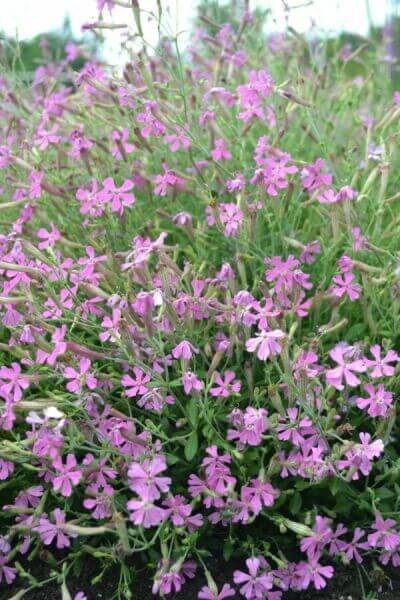Best Hedging Plants For Boundary Marking
Improve your garden's attraction with lavish hedge ranges such as Yew (Taxus), Thuja, Laurel, Photinia, and Bamboo, commemorated for their structural stability and environmental benefits.
Yew and Thuja supply evergreen coverage and winter season resilience, while Laurel provides quick growth and broad, aromatic leaves.
Photinia adds seasonal charm with its dynamic red foliage, and Bamboo provides a low-maintenance, serene ambiance.
These hedges enhance air quality, reduce noise, and develop tranquil, private spaces.
Correct planting, spacing, and upkeep ensure vigorous development and eco-friendly harmony.
Explore how these lavish varieties can raise your garden's appeal and wellness.
Secret Takeaways
Change Your Garden With Lush Hedge Ranges
- Select Yew for its dense, evergreen growth and unrivaled durability.
- Opt for Laurel for its fast growth and broad leaves, guaranteeing fast personal privacy.
- Choose Photinia for its vibrant seasonal foliage, which turns a striking dark red.
- Utilize Bamboo for a low-maintenance, winter-hardy hedge with aesthetic appeal.
- Area plants 2-3 per meter and prune regularly for optimum growth and health.
Popular Hedge Plants
When transforming a garden with lavish hedge varieties, it's necessary to think about popular hedge plants such as Yew, Thuja, Laurel, and Photinia due to their unique qualities and advantages.
Yew (Taxus) is highly esteemed for its durability and thick, green development, making it a prime option for sustaining landscapes.
Thuja is kept in mind for its evergreen foliage and robust winter durability.
Photinia includes seasonal vibrancy with red leaves that darken over time, developing vibrant visual appeal.
Laurel offers fast growth and aromatic, broad leaves, ideal for quick personal privacy.
Additionally, Bamboo is an excellent choice for ambiance, using a low-maintenance, winter-hardy option that enhances the garden's visual with its stylish, swaying walking sticks.
These choices cater to a variety of horticultural requirements and choices.
Benefits of Garden Hedges
Garden hedges offer a wide variety of benefits, making them a valuable addition to any landscape. These natural barriers are cost-efficient to carry out and offer significant wind defense, improving air circulation and adding to sound reduction. The thick foliage of hedges like Thuja and Beech guarantees privacy by blocking exposure, creating a tranquil and secluded environment.
Hedges also play a crucial function in microclimate regulation, supplying a stable environment that cultivates plant growth and decreases temperature variations. Their elaborate leaf structures filter contaminants, improving air quality and adding to a healthier garden environment.
Moreover, hedges excel in sound reduction, taking in and deflecting acoustic waves to lower ambient noise levels. This double functionality of offering both visual and acoustic privacy boosts the overall serenity and visual appeal of any garden.
Planting and Maintenance Tips
For an effective hedge, careful preparation of the planting area is important. Ensure the soil has appropriate pH and drain to support strong root advancement.
Space the plants appropriately for the picked types. Water the hedge frequently throughout its initial development stage, changing as needed with seasonal changes.
Execute a organized pest control and disease avoidance technique, utilizing chemical or organic treatments when essential. Frequently inspect for aphids, mites, and fungal infections.
Apply mulch to maintain wetness and suppress weeds. Seasonal pruning promotes dense growth and air flow, important for plant health.
Following these standards will help you cultivate a lively, well-maintained hedge that boosts the beauty of your garden.
Spacing and Trimming Standards
Spacing and Trimming Guidelines
Correct spacing and cutting are crucial for cultivating healthy, visually appealing hedges. Sufficient spacing guarantees each plant gets adequate nutrients, light, and airflow.
Follow these guidelines for ideal hedge maintenance:
- Spacing: Position hedge plants 2-3 plants per meter to encourage robust growth.
- Pruning Techniques: Regular pruning is essential for keeping wanted hedge height and shape. Cut brand-new development in summer season and cut down older wood throughout winter.
- Seasonal Care: Adjust trimming methods and schedules according to seasonal requirements to make sure plant health.
- Hedge Height: Routinely screen and trim to maintain the desired hedge height and attain consistent aesthetic appeals.
Adhering to these actions will guarantee your hedge flourishes, enhancing both the appeal and performance of your garden.
Selecting the Right Hedge
Choosing the Right Hedge
Picking the proper hedge involves evaluating aspects such as mature height, foliage density, and ecological durability. Successful hedge plant choice requires comprehending each species' development characteristics and site-specific adaptability.
For instance, Yew (Taxus) provides excellent durability and dense growth, while Thuja is significant for its winter resilience. Furthermore, considering upkeep requirements is crucial; fast-growing types like Laurel or Privet demand routine trimming, whereas low-maintenance choices like Bamboo or Ivy might be more suitable for those seeking very little maintenance.
Environmental aspects such as soil type, light accessibility, and wetness conditions ought to likewise guide the choice procedure. This careful technique ensures the selected hedges will thrive, offering both visual and functional benefits to the garden landscape.
Shipment and Planting Suggestions
To ensure your hedge plants prosper, they must be provided by specialized couriers and planted immediately upon arrival.
Follow these vital steps for successful planting:
- Soil Preparation: Enrich the soil with raw material to enhance drainage and nutrient content.
- Planting Depth: Develop a trench two times the width and equal to the depth of the root ball.
- Watering Techniques: Water completely after planting, keeping the soil consistently moist however not filled.
- Mulching: Apply a layer of mulch to maintain wetness and reduce weeds.
Customer Support and Service
Offered the important role of prompt support in horticultural pursuits, our client support group is readily available six days a week through telephone, email, and social media to use professional advice and swiftly attend to any concerns. Their devotion to quick action times guarantees consumer complete satisfaction by dealing with questions associated with plant health, optimum planting methods, and upkeep schedules.

Email
Within 24 hours
This thorough support group, reinforced by an excellent 9.3/ 10 client rating, highlights our dedication to improving the gardening experience for every customer.
Frequently Asked Concerns
For How Long Does It Consider Hedge Plants to Establish?
Hedge plants usually require one to 3 years to become totally established, with the specific period varying by types and growing conditions.
Effective care during this important period is necessary for robust growth. Constant watering, alert weed control, and appropriate fertilizer application are essential in promoting strong root development.
For example, fast-growing types like Laurel might establish more rapidly, while slower-growing ranges such as Yew might take longer. Persistent upkeep speeds up the establishment process, leading to thick and healthy hedges.
What Are the Best Hedge Plants for Personal Privacy?
The concern of the best hedge plants for privacy involves examining evergreen and deciduous options.
Evergreen hedges like Thuja, Laurel, and Cypress provide year-round coverage, guaranteeing constant privacy.
In contrast, deciduous hedges such as Beech provide seasonal personal privacy, shedding leaves in cooler months.
Secret maintenance suggestions for privacy hedges include regular trimming, fertilizing in spring, and appropriate spacing-- normally 2 to 3 plants per meter.
In addition, constant watering and diligent weed elimination are crucial for promoting healthy, dense growth.
Can Hedge Plants Attract Wildlife to My Garden?
Yes, hedge plants can attract wildlife to your garden by providing essential benefits like shelter, food, and nesting sites, thereby enhancing regional biodiversity. Yew, holly, and laurel are outstanding for bring in birds, while ivy supports a range of pests.
Nevertheless, it is essential to note that there are some drawbacks, such as increased upkeep to handle insects and regular upkeep. Carefully choosing and maintaining hedge varieties can assist balance these benefits and downsides, eventually promoting a vibrant and sustainable community in your garden.
Are There Any Blooming Hedge Plants Available?
Yes, there are flowering hedge plants offered that can boost the charm of your garden.
For instance, Elaeagnus, likewise called Olive Willow, produces aromatic white flowers in the fall, adding a touch of beauty.
Photinia, another popular choice, showcases dynamic red leaves that mature into an abundant green, creating a dynamic visual result throughout the seasons.
To guarantee these plants grow, it's vital to practice proper pruning strategies and seasonal maintenance, such as trimming brand-new growth in the summertime and cutting back in the winter.
These procedures will help maintain the health and visual appeal of your blooming hedges.
How Do I Prevent Insects in My Hedge Plants?
To avoid pests in hedge plants, utilize natural bug control methods and preserve correct hedge care. Present advantageous bugs like ladybugs, which victimize harmful pests, to produce a well balanced environment.
Regularly inspect your hedges for signs of problem and promptly remove any affected parts to prevent the spread. Guarantee the health of your hedges by using well balanced fertilizers and supplying appropriate water.
Utilize mulching to retain soil moisture and proper spacing to reduce plant stress and promote robust growth. These practices jointly assist in minimizing pest issues and maintaining a healthy hedge.
Conclusion
In essence, selecting the right hedge varieties such as Yew, Thuja, and Laurel can transform any garden into a tranquil haven. These plants supply year-round plant, boost visual appeal, and offer practical benefits like sound decrease and wind security.
Appropriate planting techniques, accurate spacing, constant watering, and seasonal cutting are important for optimal growth.
Dependable delivery services and skilled client support make sure a smooth experience from purchase to planting, making it simpler than ever to raise your outside space.
Garden hedges use a plethora of benefits, making them a valuable hedge plants addition to any landscape. These natural barriers are cost-efficient to carry out and provide significant wind security, enhancing air blood circulation and contributing to noise reduction. The thick foliage of hedges like Thuja and Beech ensures personal privacy by obstructing exposure, creating a tranquil and secluded environment.

Pruning Methods: Regular pruning is important for maintaining desired hedge height and shape. Cut brand-new development in summertime and cut back older wood during winter season.
Comments on “Best Hedging Plants For Neat Hedges”